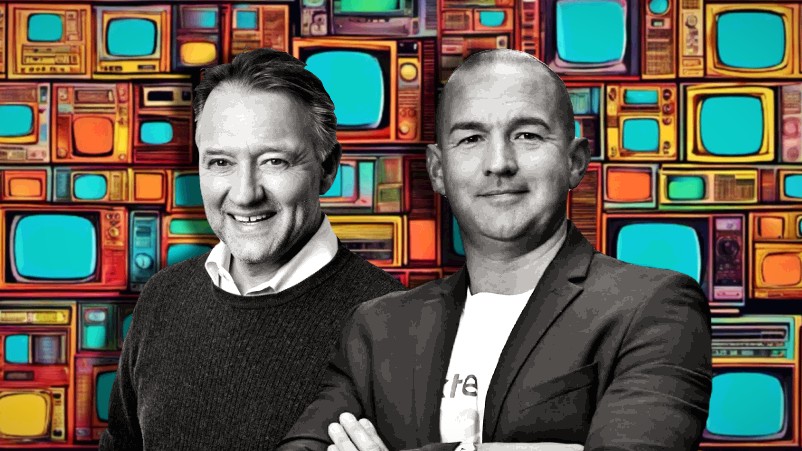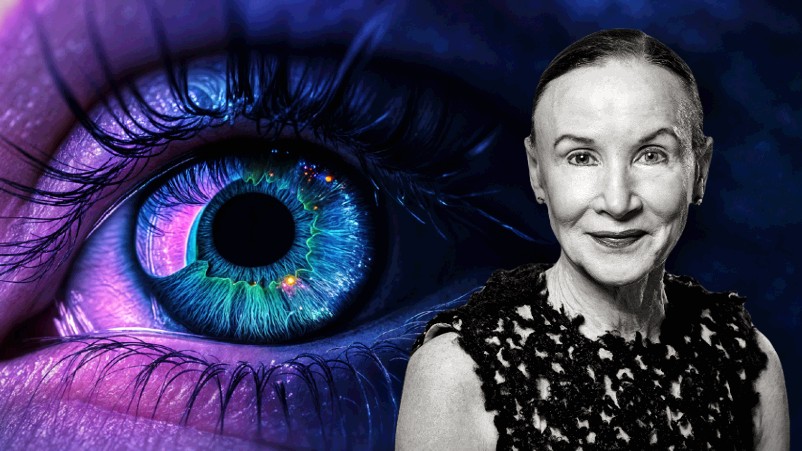Media mix model: ex-OzTam CEO, Foxtel Media boss plot path beyond TV currency into hard ROI – with brands, agencies, streamers plugging into Kantar, own panel incoming

TV and streaming measurement overhaul: Mark Frain (right) and Doug Peiffer have little time to waste.
Streamer inventory is flooding an already weak ad market. Marketers have signalled an FY25 surge in lower funnel performance investment. Hence former OzTam CEO Doug Peiffer and Foxtel Media boss Mark Frain moving at speed to create TV and streaming measurement that ultimately crosses into hard sales and true ROI. Frain thinks getting everything into Kantar can solve the challenge of getting brands to plug-in sales data – and maybe the OzTam rival Video Futures Collectives will likewise lift the template. Peiffer thinks panels like OzTam still have a future – and hints that he may build his own. But in tandem, “you’ve got to leverage big data, otherwise you’re just going to get bounce and zeros and disappointment.”
What you need to know:
- Ex-OzTam CEO Doug Peiffer now leading charge at Foxtel Media to build measurement system that goes beyond content and ad measurement.
- That system – fused set-top box and streaming data calibrated by a panel – could form basis of measurement used by global streamers and local TV companies set up as Video Futures Collective, perceived as a direct challenge to OzTam and its owners Seven, Nine and Ten.
- Frain’s aim is to tie ads directly to hard ROI metrics like sales – but admits brands unlikely to hand over sales data. But Kantar could prove conduit: Brands, agencies and third parties could plug-in or take a feed from Kantar.
- Pfeiffer tasked with leveraging contacts and expertise locally and globally to move fast as pressure mounts on ad market and publishers.
If we don't get closer to return on investment for all of our partners ... we won't have table stakes ... With 70 per cent of our customers now being streaming customers, we've got that opportunity to move faster than we ever have. But you need the right level of contacts, locally and globally, to move at that speed. Personally, I don't have them. But Doug certainly does.
Return path
There’s a hint of irony to former OzTam CEO Doug Peiffer joining Foxtel Media – given boss Mark Frain says the move is all about moving fast and fixing things amid strengthening structural headwinds for TV. It took OzTam five years to get total TV measurement system VOZ in market and there was little love lost between currency provider and pay TV firm over ratings discrepancies that ultimately played out in masthead media sections. But, per Frain, “I don’t think Doug was ever the problem”.
Pressure is hitting Australia's big publishers at both ends. Monthly SMI data shows continued double-digit year on year declines for TV spend in 2024 as global streamers pushing into ads dump more inventory into an already weak market. Meanwhile, per Mi3’s market-wide sweep of $3bn in marketing investment across 105 brands, 43 per cent of marketers are swinging hard for lower funnel performance channels in FY25. They need demonstrable results, fast – likewise publishers.
“If we don't get closer to return on investment for all of our partners – whether that's on a macro level with an agency, or on a finite level with an advertiser, we won't have table stakes,” said Frain. “There is a genuine level of speed required to do that – you've got to be able to move faster than you ever have before with potentially a bunch of partners that you might not have considered 12 months ago.”
Contacts book
Frain needs Peiffer’s expertise – and contacts – to move into the next phase of Foxtel’s own measurement play that he thinks may then be lifted by the breakaway consortium dubbed the Video Futures Collective. The group, with global platforms on board, officially launched last year aiming to build an alternative TV and streaming trading currency. It’s a direct challenge to the Seven, Nine and Ten-owned OzTam that its key stakeholders have warned risks “total chaos” as currencies fracture.
Over the last nine months Kantar has processed two years’ worth of Foxtel’s set-top box return path data, and now has ongoing audience data. That has removed zeros from ratings charts and reduced major swings in audiences for key shows – 10-20 per cent week on week for some sports that Frain claimed had been apparent under OzTam’s panel-based methodology.
Peiffer said swings and statistical zeros are just the nature of relatively small panels spread thin. “It’s a sampling issue … it would be like asking 1,100 people in Australia ‘did you listen to the Mi3 podcast?’ But you [the publisher] know how many people downloaded it – and it is the back channel [data] that is so important.”
It's a change of tune, though Peiffer had been pushing that agenda before leaving OzTam last year.
Either way, Foxtel's sports audience swings are now “single digits” measured via set top box data said Frain, and essentially depend on which teams are playing. But now the firm needs to fuse its streaming data into the mix alongside its set-top box data. Hence bringing in Peiffer.
“With 70 per cent of our customers now being streaming customers, we've got that opportunity to move faster than we ever have. But you need the right level of contacts, locally and globally, to move at that speed. Personally, I don't have them,” said Frain. “But Doug certainly does.”
Mutinex model?
Frain and Peiffer aim to go beyond content measurement and closer towards hard ROI being modelled by the likes of econometric modelling outfits Analytic Partners and Mutinex. Problem is, convincing brands to plug-in hard sales data is challenging. Hence handing over everything to Kantar: get everything in one place, per Frain, and then it’s a lot easier for others – brands and agencies either directly or via third parties – to plug in to Kantar and work out impact of ads on things like search, site traffic, and ultimately, sales.
“Once our house is in order and everything is in one place, the optionality of what that allows us to do – it could be part of a solution that multiple other players come and join,” said Frain, nodding to the Video Futures Collective. “But most importantly, it allows [Foxtel Media] to work with many research companies to allow us just to prove how impactful we are to advertisers.”
No one is saying you don’t need a panel. But it is getting harder to use the panel as the currency grade by itself, standalone.
Panel incoming
Peiffer spent years defending OzTam and its gold standard panel-based currency. Does the incumbent provider have a future in its current form?
“You’ve got to leverage big data,” he told Mi3. He pointed to UK ratings counterpart, Barb, as a model OzTam may wish to lift.
“Barb has just put out its latest tender and it’s called Panel Plus. So they are going to get Sky data, they are going to get big data, [but] they are [also] using panels.” He said the same applies to all the major US currency providers using massive return path data sets but traditional panels to "calibrate" them. “No one is saying you don’t need a panel. But it is getting harder to use the panel as the currency grade by itself, standalone.”
Which means Foxtel Media – and the Video Futures Collective – will also need a panel. “We might set one up with Kantar and do it ourselves,” said Peiffer. Either way, “you’ve got to leverage big data, otherwise you’re just going to get bounce and zeros and disappointment.”
Peiffer's plan
Now at Foxtel Media with a clean slate, what’s Peiffer's plan to move fast and fix things?
“We’ve got to start putting some co-viewing factors onto content – and to ads,” he said. I.e. showing there are more than one set of eyeballs watching any given show and its ads, with knock-on implications for audience numbers, and ultimately, revenue.
“So working on co-viewing, working on demos, working on data matching, working on return path data from Kayo and Binge… and then working with Kantar on how to stitch that all together.”
Once it’s all housed within Kantar, maybe others will plug in their sales data or take a direct feed from Kantar – and the industry, or part of it, will transcend content and audience measurement and prove TV's hard sales impact. Maybe. But Pfeiffer has his work cut out and the meter's running.


